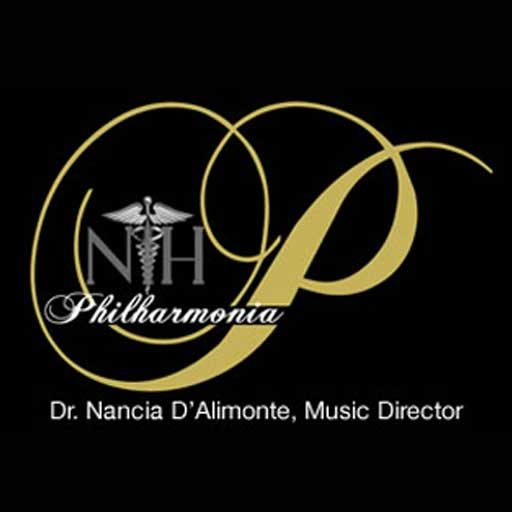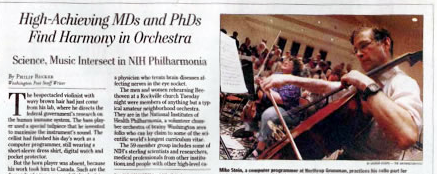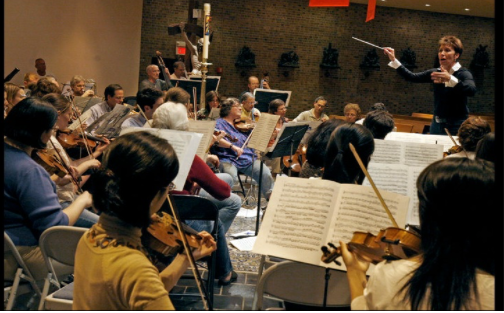Making Intelligent Music Doctors, researchers and federal government workers comprise the National Insitutes of Health Philharmonia. The group performs for free, with donations going to NIH charities.
The Washington Post Edited by washingtonpost.com
By Philip Rucker Washington Post Staff Writer
Saturday, May 10, 2008
The bespectacled violinist with wavy brown hair had just come from his lab, where he directs the federal government’s research on the human immune system. The bass player used a special tailpiece that he invented to maximize the instrument’s sound. The cellist had finished his day’s work as a computer programmer, still wearing a short-sleeve dress shirt, digital watch and pocket protector.
But the horn player was absent, because his work took him to Canada. Such are the demands of a top neuro-ophthalmologist, a physician who treats brain diseases affecting nerves in the eye socket.




